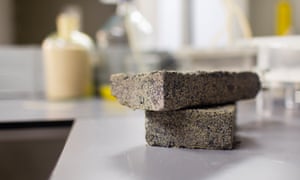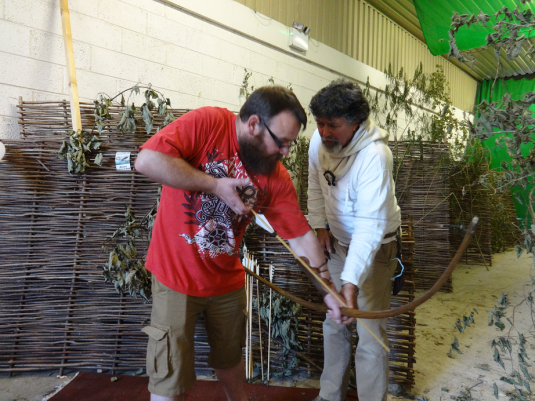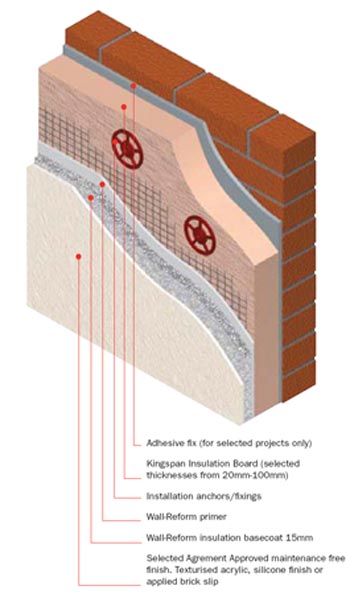InstructablesInstructables
Original Article
https://www.instructables.com/id/How-to-Fix-Corroded-Battery-Terminals/?utm_source=newsletter&utm_medium=email
HOW TO FIX CORRODED BATTERY TERMINALS
By lonesoulsurfer in TechnologyElectronics14,62911033
Introduction: How to Fix Corroded Battery Terminals
About: I’ve always liked pulling things apart – it’s the putting back together again that I have some issues with. More About lonesoulsurfer »
Many a time I’ve managed to get my hands on some electronic gizmo only to find that the battery compartment totally corroded. It’s usually one of the main reasons I think that people throw toys and whatever else takes batteries away.
The corrosion is caused by potassium hydroxide which can leak out of alkaline batteries (these are the usual types of batteries you put inside toys etc). All batteries discharge, either through use or just slowly through the production of hydrogen gas which forms pressure in the battery. Eventually that pressure will find a way out through a seal or as the battery ages, through corrosion or rust in the outer shell.
Once a leak forms then the best thing to do is to get rid of the battery and neutralise the acid. However, if you don’t get to it in time, then the corrosion will grow and spread out of the battery which causes oxidisation and corrosion of the terminals making your device caput.
This Instructable will go through a couple of ways that you can fix your device to bring it back to life again. The first is the most extreme corrosion where the terminals have to be replaced, the second is a small amount of oxidisation which only needed the acid to be neutralised and the terminals to be cleaned.
You can take precautions though to stop this happening such as not mixing different battery types in the same device, replacing all of the batteries at the same time, storing in a dry place and at room temperature, and removing batteries for storage of devices. I’m inherently optimistic (and also lazy) so I’ve never taken any of these precautions but it’s definitely good practice, especially with expensive electronic goods.
Add TipAsk QuestionCommentDownload
Step 1: Parts and Tools
Your parts are going to be any electronic goods that need terminal cleaning and/or relacing. The following though will come in handy when you are going this type of work
Tools
1. Battery Holders. I have a bunch of these lying around which are good for projects. You can also use the terminals from them to repair other electronic goods.
2. Small files
3. Baking soda
4. Small paint brush
5. Needle nose pliers
6. Ear cleaners
7. Wire cutters
8. Soldering iron
9. Rubber gloves – to protect your skin from the potassium hydroxide. I have touched it before and it does mildly irritate the skin so it’s best to use gloves when handling.
10. Eye protection – self explanatory
Don’t use your fingers to try and remove the batteries. Although the acid isn’t very strong, it will still irritate your skin (I know as I’ve touched it before!).
Steps:
1. Place a set of rubber gloves on and some safety glasses
2. Use a small screwdriver to pull the batteries out. The glasses here are very important as it is easy to flick small pieces of the corrosion whist pulling out the batteries.
3. Sometimes that batteries can be so corroded that they virtually weld themselves to the terminals. In this case you will need to use a large screwdriver and maybe some pliers to remove them. You’ll probably rip out the terminals as well so be careful you don’t pull any wires out at the same time
4. Dispose of the batteries in a plastic bag.
Next thing to do is to remove all of the corroded terminals. It can be tricky sometimes to do this if they are severely corroded as bits can break off and the grooves in the battery holder can get clogged-up.
Steps:
1. Use a small, thin screwdriver and push this between the top of the terminal and the battery holder. This should bend out the terminal
2. With a pair of needle nosed pliers, grab hold of the terminal and pull it out.
3. If the terminal has solder points, make sure you de-solder or cut the wires and cut them away to be able to remove them easily
4. Dispose of the corroded terminals once removed
Add TipAsk QuestionCommentDownload
Step 4: Cleaning the Battery Cover
Picture of Cleaning the Battery Cover
Picture of Cleaning the Battery Cover
Picture of Cleaning the Battery Cover 2 More Images
The battery holder that I fixed came away from the torch so make it easy to wash and clean. However, this might not always be the case as it will depend on what type of electronics you are cleaning.
Steps:
1. You can neutralise any leftover acid with some vinegar or baking soda and water paste. I use the baking soda trick in the other example I do in the Instructable.
2. Next if possible, wash out the bottom of the battery holder and clean any of the old acid away from the case. If you can’t remove the battery holder, then you are going to have to be a lot more careful when cleaning the area. Use a damp cloth instead of running water and remove any leftover acid
3. Next, you may need to remove any pieces of terminal or corrosion that is in-between the grooves that the terminals sit in. Use something thin and sharp to remove anything lodged inside the grooves.
4. Lastly, give the area a clean with some Isopropyl Cleaning Alcohol to remove any last traces of the acid.
In some cases, the corrosion is so bad that you need to replace the terminals inside the battery compartment. One of the easiest places to get these is from old battery holders. You could also grab the terminals out of any old electronic parts
Steps:
1 If your battery terminals have tabs on the back, make sure you lift these up first. You might also need to de-solder any wires on them if you got the terminals out of a toy etc.
2 Next, use a small screwdriver to push them out of the battery holder. Just place the tip of the screwdriver into the bottom of the terminal and lift it out of the battery holder. They are held in place by a couple of grooves in the side of the battery holder so should come out relatively easily.
Add TipAsk QuestionCommentDownload
Step 6: Modifying the Battery Terminals
Chances are you will need to modify the battery terminals so they will fit into the batter holder You can do this pretty easily with some wire cutters and a dremel if you have one.
Steps:
1 First, try and fit one of the terminals into the battery holder grooves. If it does fit, then you can probably ignore this step and move onto the next. If not, then you will need to modify it.
2 Trim the sides of the terminal with some wire cutters and try to push into the grooves again in the battery holder
3 I also had to add a small slit into the terminal in order for them to fit which I did with a dremel.
4 Once you have modified, it’s then time to add them to the battery holder
Steps:
1. The first thing to do is to determine the orientation of the terminals. You need to make sure that the spring section on the terminal will be touching the negative part of the battery and the flat section is touching the positive.
2. Usually you can just look on the bottom of the battery holder and there will be images or the orientation. If not, then work out where the positive wire is going to be connected to the terminal and use this as a guide on the orientation of the terminals.
3. Place the terminals into the battery holder grooves and push into place. If they are a little loose then usually the batteries will hold them into place. However, you can slightly bend the terminal and push it back into the grooves which will make the fit a little tighter.
4. Once you have all of the terminals in place, solder the positive and negative wires to the solder points on the terminals.
Steps:
1. Before you screw everything back into place, add some batteries and make sure everything works as it should.
2. If everything works ok – replace the screws and covers and whatever else needs replacing to finish off your part
3. Lastly, give it another test and make sure it works
4. Now if you don’t want to have to do this all over again, go back to the intro and follow the precautions
This is really the most extreme case of having to fix battery terminals. The next sample, I think is more common and is more oxidisation of the terminals due to some leakage of the batteries. It’s easier too to fix!
I found this cool, vintage mike at the tip and wanted to try and get it going again. Initially I tested it not knowing that it needed an AA battery and thought it was probably something to do with the wiring. After un-screwing the case however I discovered that it needed a AA battery to run. The battery had been in place for some time and the terminals were oxidised and had some minor corrosion damage. I could have replaced the terminals but decided it would be easier just cleaning them
Steps:
1. Remove the old battery with a screwdriver and dispose of. Even though there was not as much damage and leakage as the first sample, I still made sure that I wore gloves and eye protection
2. You can see in the images that there is a little corrosion and acid on the end of the terminal but that the terminal itself looks relatively unaffected structurally.
3. The brown streaks you can see running through the middle of the battery holder is actually glue that has discoloured over time, not corrosion
4. The next step is to neutralise the acid
Next thing to do is to neutralise any residual acid left of the terminals. There are a couple ways you can do this; one is with vinegar (I didn’t have any on hand so didn’t go with this option) two, with baking soda which is what I used.
Steps:
1. First thing to do is to make a paste with the baking soda and a little water. You want to make it not too runny as the water could affect the electronics in whatever you are fixing. However, at adverse is true as well, too thick and it won’t spread well. You need to find the goldilocks mixture somewhere in the middle
2. Once you are happy with the mixture, add a little to each terminal with a small paint brush or something similar
3. Wipe off any excess from the terminals before it dries.
4. Now that the acid has been neutralised, it’s time to clean-up the terminals
You need to remove any oxidisation and corrosion from the terminals. I find that the best thing to use is a small file but you could use sandpaper as well
Steps:
1. Use a small, fine file on the terminal until the oxidisation and any corrosion is removed. You may not be able to get it all off but sure you get as much as possible.
2. Once you have removed the oxidisation, give the terminals a clean with some isopropyl alcohol
3. You can sometimes remove the terminals from the grooves without having to undo any screws or removing any wires. It sometimes makes it easier to file if you can do this – just be careful that you don’t break any wires etc.
Steps:
1. Once the terminals are clean and back into place, you can add a battery/s and test.
2. As before, it’s best to test before you screw everything back into place
That’s it! Hopefully you have managed to bring something back to life again with only a little bit of work.
Do you have any other tips? Let me know in the comments
Did you make this project? Share it with us!
ReplyUpvote
Good article, and I’m glad to see that I’ not the only one who tries to save electronic toys, instruments, etc. However, baking soda only works on the old acid-zinc or carbon batteries, not on alkaline, NiCAD or NiMH ones.
Direct from Duracell.com:
To clean any leakage of the following battery types, Alkaline, NiCAD and NiMH batteries, use either one tablespoon of boric acid in one gallon of water or a mixture of equal amounts of diluted vinegar or lemon juice with water (50/50 ratio).
BTW, the term is oxidation, not oxidisation. A strong base (also called caustic, or alkali) can be just as destructive or harmful to skin or eyes as a strong acid. Some metals are affected as much or more by caustics than acids (such as aluminum or zinc – which includes brass, which is a copper/zinc alloy frequently used in battery terminals). From personal experience, handling cement (strong caustic) or concrete – either wet or dry – for any length of time with bare hands will be painful lesson to anyone careless enough to do it.
1
None
russ_hensel
13 minutes ago on Step 10
ReplyUpvote
You may clean with vinegar, but do not nuturalize acid with it; it is acidic.
None
mbkafil52
24 minutes ago
ReplyUpvote
My problem is that the battery compartment of my Apple key board is jammed due to battery corrosion inside. Any bright ideas how to unlock it?
None
DavidE341
25 minutes ago
ReplyUpvote
Very good instructions! Done this many times myself. I would only add that I also use a water displacement/penetrating oil (e.g., WD40, Kroil) during the sanding phase as it helps cut through the surface rust.
None
CarletonS
31 minutes ago on Introduction
ReplyUpvote
Great info. I’ve had many instances where the batteries have leaked after prolonged non-use. I’ve always wondered if just removing the oxidized terminals would do the trick, only to find that any little bit of acid left will cause the batteries to leak again. Thanks so much for educating this non-scientific person. 🙂
None
FrankB170
33 minutes ago on Step 7
ReplyUpvote
I never thought of the idea of snagging the springs and terminals out of those Radio Shack battery holders. Great idea.
(Please change your references to acid. KOH is actually a base and using baking soda seems counterproductive. Still, great article and thanks.)
None
ThirdEarthDesign
34 minutes ago
ReplyUpvote
Great tips and information, thanks for the I’ble!
None
KenL39
8 hours ago on Step 10
ReplyUpvote
Vinegar is acid so it won’t neutralise acid from the battery- the baking soda is alkaline so it will work
2 replies
None
EwenF2
Question 36 minutes ago on Introduction
AnswerUpvote
If the corrosion is caused by potassium hydroxide, which is an alkali and comes from alkaline batteries, why do you call it acid and talk about neutralising it with vinegar, which is also an acid? Since it is alkaline, you cannot neutralise it with baking soda, which only reacts with acids.
1
None
mf70
44 minutes ago
ReplyUpvote
Another tool that helps in cleanup is a fiberglass scratch brush, such as:
None
SpikeH3
48 minutes ago on Introduction
ReplyUpvote
I thought vinegar was an acid (acetic acid?) – so how can it neutralize acid?
But an excellent and useful article. Never occured to me to cannibalize cheap battery holders.
None
Deltic
49 minutes ago
ReplyUpvote
I’ve found that lemon juice, an old toothbrush & the disposable variety of nail file do the job nicely.
None
SallyC47
Tip 49 minutes ago
ReplyUpvote
For really fine wire, I burn the plastic and while its still warm just pull it off.
None
wdkdave
50 minutes ago
ReplyUpvote
if you don’t have vinegar or don’t like the smell of vinegar – lemon juice will also do the trick, and again the corroded residue is a base not an acid so needs a mild acid to remove it.
1
None
gm280
21 hours ago
ReplyUpvote
Spot on with everything you stated. I’ve been down this road a few times my self. And if you don’t have other battery holders to donate parts from, you can always use a tin can (not aluminum types) and cut out your own terminals. They solder that same and are not that hard to form into replacement terminals. Always better then throwing away the electronic item. Thumbs Up!
N.B.
ReplyUpvote
I agree for bakin soda (a base from the chemical point of view) able to neutralize acid residual. But using vinegar (containing acetic acid) imho is a non sense, even if could it be acts as a deagreasing agent.








 TripAdviser comments
TripAdviser comments




























